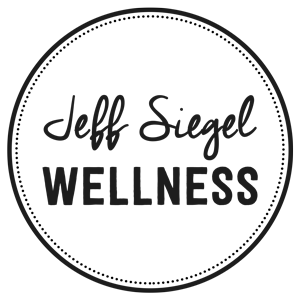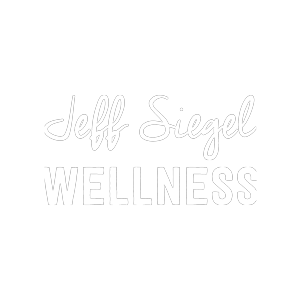I was sitting on the bouldering mat with Kate looking at a climbing problem she was working on. She said she had made it most of the way up but was having trouble with the last move. I told her to give it a try so I could watch her climb.
She got on the wall and started climbing (far more gracefully than myself, I’d like to add). When it came time to make the last move, she twisted her foot into the wall and reached her arm up for the hold. Missing by only an inch, she fell off the wall and landed on the mat.
When she walked back over to me, she had a slightly dissatisfied look on her face. I could tell getting so close was frustrating her.
I asked her the first question that popped into my mind while watching, how was she breathing while climbing?
She paused and said, “Good question. I’m not sure.”
Most of us are often unaware of our breathing. After all, our lives demand we give our attention to more urgent things.
However, coming back to the breath is perhaps one of the most useful tools we have to reconnect with our body and alter its physiology.
Aside from being an excellent tool for grounding our awareness, the breath plays a crucial role in modulating our nervous system.
When it comes to movement, fitness, and athletics, you want to be sure you are not just breathing, but you are using your breath to enhance performance.
There are three primary ways the breath can serve you:
Stabilizing, Sustaining, & Surging.
Here’s what you need to know.
Stabilizing

Breathing for stability is about getting your body into a position and keeping it there, relatively unchanged throughout the duration of a movement. This stability is generated from increased tension through your trunk as your abdominal muscles (rectus abdominus, internal and external obliques, the transverse abdominals) contract against the descended diaphragm. Learning to activate this intra-abdominal pressure by breathing in and bracing your abdominal musculature helps stabilizes the spine and provide a rigid core necessary for leverage and strength.
Timing the breath and brace cycle with particular phases of a strength movement helps the body create the stability that enhances performance.
For example, if you are weight training and doing heavy squats, it is appropriate to take a deep breath and brace the abdomen as you descend into the squat and exhale as you come back to standing. If you’re doing a push-up, you may also want to breathe in at the top of the movement, brace the core as you lower yourself to the floor, and exhale as you come up.
Learning to create sufficient stability through your core, is perhaps on of the most challenging things I see with newbies. They often hold their breath because they have not learned how to maintain contraction through the abdominal musculature while moving the diaphragm. The result is that they lose all core stability the minute they inhale so the body unconsciously prioritizes stability over-breathing throughout the set. What’s the quickest fix? As Ryan from GMB likes to say, just smile 🙂 and your breathing will return back to normal. Over time, you can learn to create sufficient stability without holding your breath.
Sustaining

This makes up the majority of breathing and is the vital component of any cardiorespiratory exercise. If your heart rate is elevated consistently for more than a few minutes, the energy demands on your body are going to be primarily aerobic. This means your cells are going to make energy by burning fuel with air. Poor breathing bottlenecks this energy production and forces cells to shift into fermentation mode (anaerobic metabolism).
Unlike aerobic respiration, fermentation produces metabolic byproducts that inhibit muscle contractions, which ultimately hinders performance and causes you to slow down. This is why proper breathing allows the body to use predominately aerobic pathways leads to sustainable activity.
Sustainable breathing is typically rhythmic, regular, and smooth to provide your body with a constant supply of fresh oxygen. Exhales must also be consistent and powerful. It is often the need to expel excess carbon dioxide built up from cellular respiration that becomes the rate-limiting factor in many aerobic processes.
Any long-distance runner will tell you how finding the right breathing rhythm is the key to maintaining his or her running pace. A consistently smooth breath allows your body to run sustainably for long periods of time using primarily aerobic pathways that can produce energy efficiently.
When breathing patterns breakdown and become irregular, the body loses its clean fuel supply and the exercise becomes unsustainable. If you find yourself out of breath, you’ve likely pushed the body away from sustainable aerobic activity.
Surging

There are times when you need an extra boost of power and your breath can help get you there. Surge breaths are dramatic inhales and exhales, usually few in number, and often associated with a grunt, yelp, or scream. This can be either an exclamation following a dramatic event, or the key boost a few moments leading up to a climax.
For instance, releasing a large yell when going for a personal record lift, taking a few powerful breaths as you make a dynamic movement while climbing, or taking that big breath before final surge to the finish line. Surging breaths not only help the body produce maximal force, but they also charge you up mentally.
Who hasn’t experienced the energetic release of a good yell.
Use Your Best Breath
The reality is that these types of breathing are not mutually exclusive. Every inhale and exhale creates to some amount of stability or instability in your body. Every breath is going to be contributing or diminishing the sustainability of your oxygen reserve and aerobic metabolism. And every breath can be psychologically invigorating or relaxing. The goal of the Three “S” framework is to be more cognizant about how the breath can be utilized in your particular activity. Remember, don’t just breathe, use your breath appropriately to maximize performance.
If you’re doing a lot of strength training, are you using the breath for stabilizing purposes efficiently?
If you are doing aerobic exercise, is your breath sustainable, smooth, and rhythmic?
And if you need a little boost for your big event, can a couple surging breaths get you there?
Right now, how are you breathing?
~ Jeff Siegel
I’m Jeff Siegel, a performance coach and mindfulness teacher, helping people upgrade their habits and improve their health.
Learn how to use your breath with a FREE 14-Day Meditation Course.
If you’d like to explore working together, you can schedule a private 20-min consultation call with me.



You can definitely see your expertise within the work you write. The sector hopes for more passionate writers like you who are not afraid to mention how they believe. Always go after your heart.